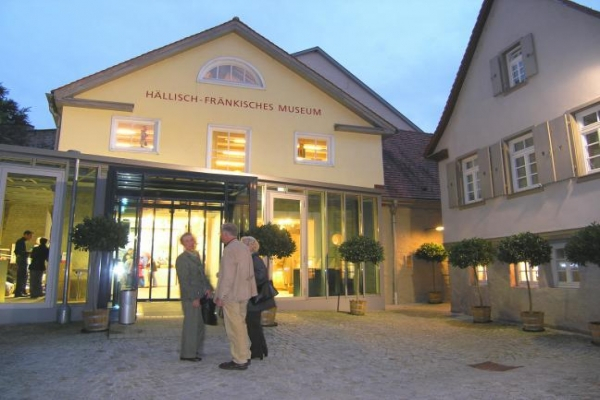by Carl Kruse
After the terrorist attack by Hamas on October 7th in Israel and the Gaza war, life changed for artist Yury Kharchenko.
And now,, the Hällisch-Fränkisches Museum is showing works by the artist in a solo exhibition from June 29th to October 20th, 2024.

The Berlin-based artist was born in Moscow in 1986. He came to Germany in the late 1990s as a Jewish refugee. From 2004 to 2008, he studied painting at the Düsseldorf Art Academy and then philosophy and literature at the University of Potsdam. The up-and-coming young artist has recently exhibited in well-known institutions, including the Museum Kunstpalast Düsseldorf, the Felix-Nussbaum-Haus in Osnabrück, the Kunstmuseum Walter, the Kunstmuseum Bochum and the Hamburger Kunsthalle.
Influenced by his experiences as a Jew in Germany, he takes up themes in his current paintings that deal with the war in Israel and Gaza, the Ukraine war, the problematic culture of remembrance in Germany, anti-Semitism and the relativization of the Holocaust. For example, he presents an Auschwitz gate with an Israeli and Palestinian flag hanging above it, and a ptyrodactyl flying out of it. What German responsibility does the Holocaust have for the current Middle East situation? Or the founding father of Zionism, Theodor Herzl, the T-Rex from the blockbuster “Jurassic Park” by filmmaker Steven Spielberg under an entrance gate whose shape is reminiscent of that of Auschwitz. The lettering, however, reads “Welcome to the Jewish Museum.” He depicts Beavis and Butt-Head, who embody woke culture from the US cartoon series, in front of the Auschwitz Gate. One of the images shows Jean Amery and an inscription on the Auschwitz Gate reads “From the River to the Sea”. Is it a call for a new genocide of the Jews and the annihilation of Israel? It is images like these that Kharchenko uses to demand more ethics from a society that is facing the decline of historical knowledge. In his works he focuses on the present, which contains a past that can never be overcome, and references to reactionary identity politics and post-colonial anti-Semitism meet totalitarianism and the utopia of consumer society. The synagogue paneling by Elieser Sussmann on display in Schwäbisch Hall is one of the most important Judaica in Europe. This alone is one reason why the Hällisch-Fränkisches Museum regularly makes reference to Jewish topics.
Among other things, Yury Kharchenko also makes reference to the museum’s collection, such as the synagogue paneling, the Nazi era and the Holocaust, and vice versa, to the questioning of what terror is today and how or whether one can still live as a Jew in Germany today.
What do the German Holocaust, Hamas and Russian terror have in common and how does an artist experience the current world situation in his pictures?
=======
The Carl Kruse Arts Homepage “Ars Lumens” is at https://carlkruse.net
Contact: carl AT carlkruse DOT com
Other articles about Yury Kharchenko are here, and here and over here.
Find Carl Kruse on Dwell. And another museum event sponsored by Carl Kruse.